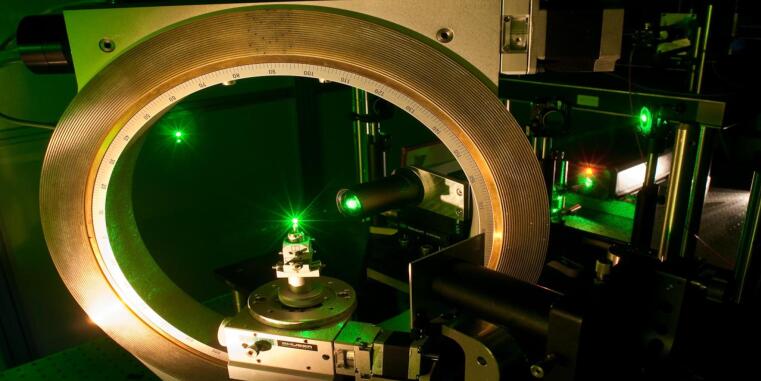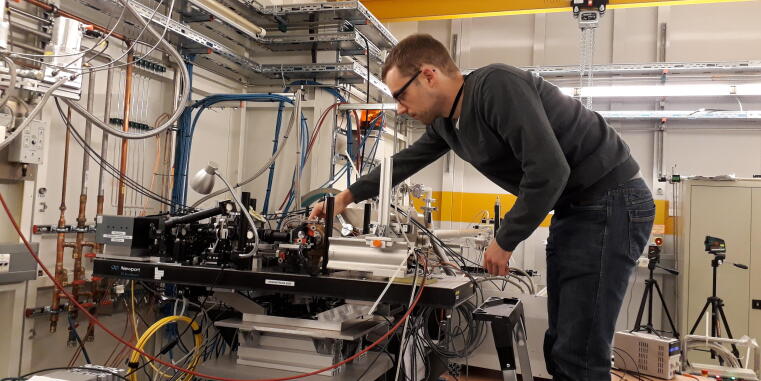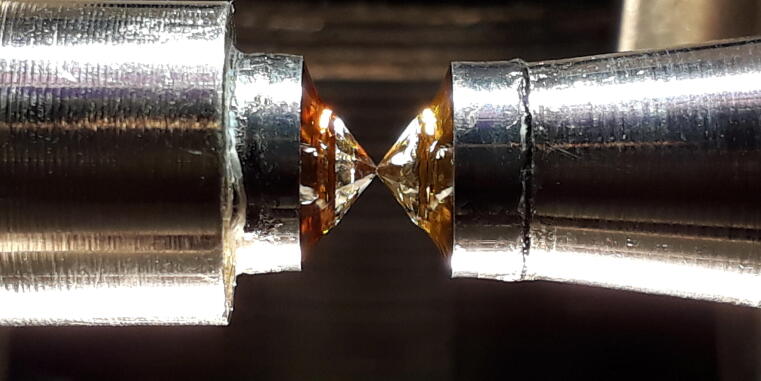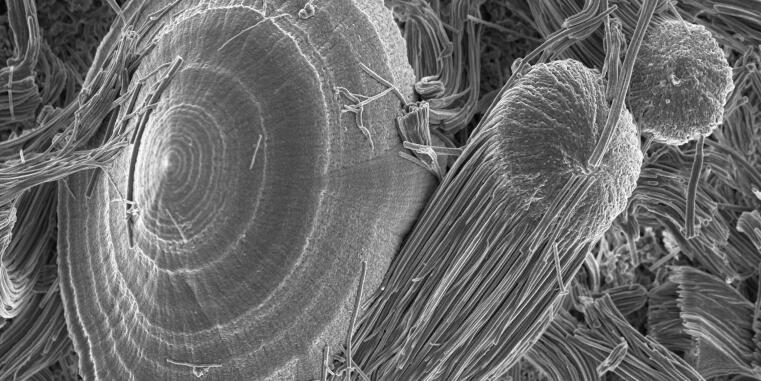Objectives
The research activities of the Mineralogy group cover a broad range of topics in the areas of Mineral Physics, Experimental (fluid) Geochemistry and Planetology.
The Mineralogy group applies high pressure techniques (e.g. diamond-anvil cells) coupled with a range of laser spectroscopies and synchrotron X-ray methods to probe the physics and chemistry of materials under deep planetary conditions. The experimental results are combined with seismic observations, cosmo-chemical data and geodynamic models to constrain the structure and dynamics of the inaccessible Earth’s and planetary interiors. Our research is interdisciplinary, at the frontiers between mineralogy, physics, chemistry and material sciences, and relies on extensive collaborations with seismologist, geodynamicists and physicists.
The Mineralogy group runs facilities for Brillouin scattering, Raman spectroscopy and X-ray diffraction, and have access to TEM/FIB facilities at the Physics Department of WWU. Additional equipment (microprobe, SEM, LA-ICPMS) is available at ICEM. The group is also an established user of synchrotron beamlines at ESRF (France), PETRA III (Germany), Soleil (France) and SLS (Switzerland).
Main research directions
- Fluid-rock interactions & mass transfer in subduction zones
- Physics of melts & dynamics of magmatic processes
- The Earth’s deep water and carbon cycles
- Structures and chemical heterogeneities in the deep mantle
- Structure and dynamics of icy moons
- The light elements budget in planetary cores
- Electronic and magnetic properties of Fe-bearing minerals in the deep Earth
-
Former Members
- Melissa Achorner, Master student
-
Ilya Kupenko
-
Peter Schmid-Beurmann
- Christina Springklee, Master student, now PhD candidate at Munich (Germany)
- Christian Pluckthun, Master student, now PhD candidate at XFEL, Hamburg (Germany)
- Xenia Ritter (now at Fields Museum, Chicago, USA)
-
Recent Thesis
Master Thesis
- Melissa Achorner, 2019, “Shear anisotropy in deformed aluminous stishovite and implications for mid-mantle heterogeneities”
- Christina Springsklee, 2018, “Tin mobilization and transport by magmatic-hydrothermal fluids and the formation of Sn(-W) deposits in the crust”
- Christian Plückthun, 2018, “Anisotropy of textured Ca-Mg carbonates in subducting slabs”
Bachelor Thesis
- Michelle Krolow, 2019, “Mobility of carbonated magmas in the upper mantle”
- Julian Siemer, 2017, “3D modeling, lithogeochemistry and alteration of the Alconchel Exploration Project”, in collaboration with the Astrobiology Center of Madrid (Spain)
- Rebecca Jacobi, 2017, “Solubility of iron in subduction zone fluids”
- Vita Mergner, 2017, “Investigation of correlation between crystallization and photovoltaic performance of perovskite solar cells”, in collaboration with the Fraunhofer Institute for Solar Energy Systems, Freiburg (Germany)
- Rafael Maraccini-Prata, 2017, “The effect of ammonium salts on the crystallization of H2O and implications of the survival of oceans in icy moons”
- Melissa Achorner, 2016, “Synthesis and plastic deformation experiments in DHMS phase A, a water carrier in subducted slabs”
- Christian Plückthun, 2015, “The redox state of subduction zone fluids”







